READY TO GET STARTED?
REQUEST A FREE ESTIMATE
Fill out the form below or call (888) 466-7849 for a free, no-obligation estimate.
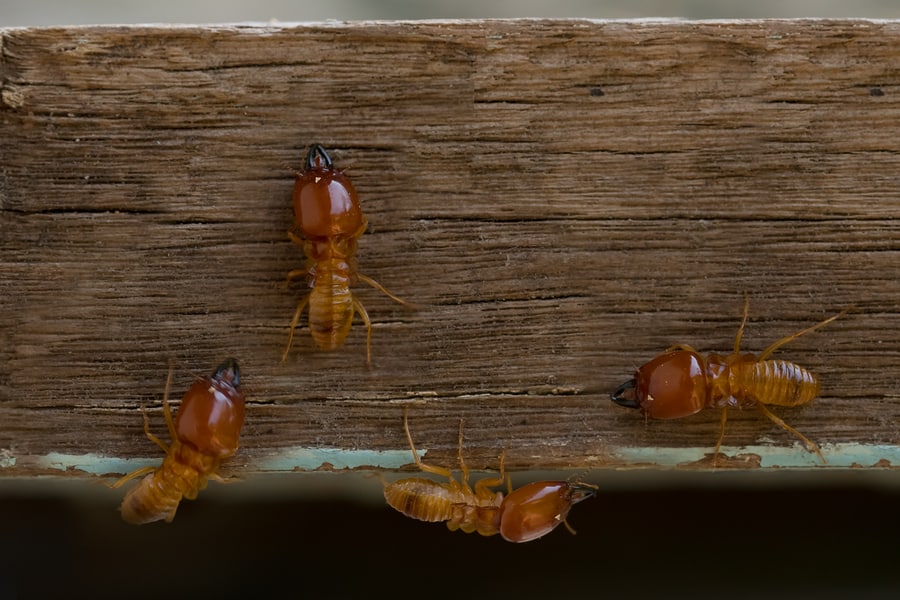
Discovering termites in your Tennessee home can be a concerning thought. Each year, termites cause billions of dollars’ worth of damage to homeowners. Don’t let your home fall under this statistic. We have all the information you need to begin termite prevention now.
Termites can’t level your home within a week or within five years, but over time they will eat away at your home from the inside out. They are difficult to spot and are incredibly quiet destroyers. The earliest signs of termite damage can be seen within months of them infiltrating your home.
One way to avoid property damage from termites is to have your home inspected once or twice a year. The best way to prevent termites is to have long-term termite control in place.
In the meantime, here are some DIY termite prevention methods you can do today:
Are you ready for long-term termite prevention in your Tennessee home? Give your local pest control company a call today and receive a free inspection to begin keeping termites away!
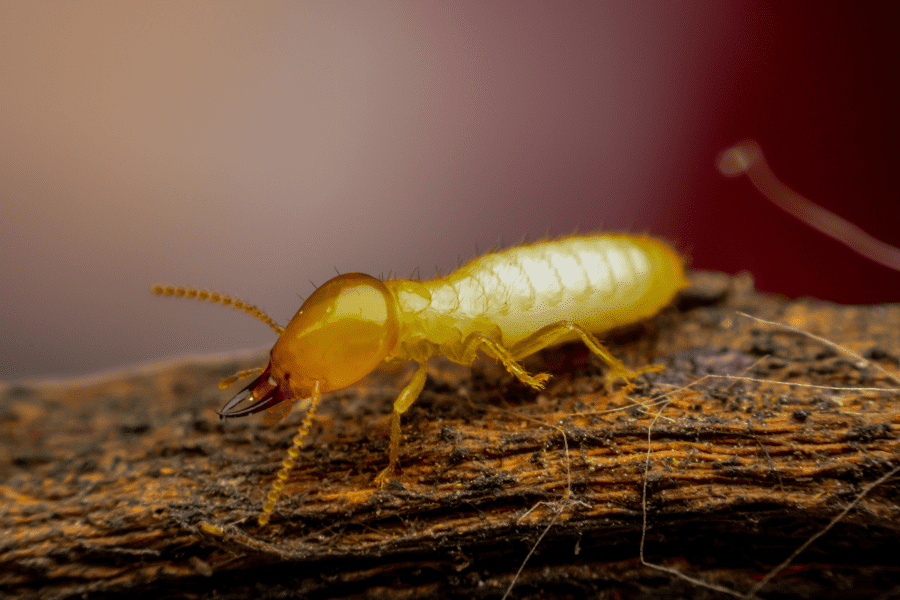
There are two factors to consider when looking at termite control: preventing them from infesting your home and treating established termite colonies. Termites are year-round pests and can go undetected for a long period of time, causing devastating damage in the process. There are several prevention methods to consider when looking to eliminate or prevent termites from your Laurens home.
One of the best and most effective ways to keep termites out is to remove any access inside your home, including gaps around water and gas lines where they enter your home. Likewise, inspect your foundation for cracks or openings and repair them immediately.
To survive, termites need wood and moisture. Eliminating these factors can help reduce your chance of a termite infestation. If you place mulch against your foundation for landscaping purposes, you could be attracting termites into your home. Mulch is a great source of food for termites as they retain any moisture. Try to minimize the use and keep it at least 15 inches away from the foundation. Additionally, if your crawlspace is experiencing a lack of airflow, it can create an ideal environment for these pests. Consider enclosing your crawlspace to prevent these termites and improve the overall health of your home by reducing moisture and decreasing humidity.
Termites can be tricky to control and eliminate! These pests will cause significant damage to your home, sometimes before you even realize they have infested. Placing preventative measures in your home to reduce the chance of a termite infestation will always help, but sometimes it’s best to leave it up to your local Laurens pest control company. These professionals can perform an annual termite inspection and provide you with the best termite control and prevention options for your home.
Spring brings warm weather and the need for spring cleaning. When making your spring to-do list, make sure to include pest control with it. The warm weather brings pests out in droves, whether emerging from their overwintering spots or searching for a mate to reproduce with. One of the most common spring pests are termites. Spring marks the beginning of termite swarming season, when termites leave their colonies in search of a mate to form a new colony with. Don’t forget to make termite treatment a priority on your spring checklist!
Termites can go undetected for long periods of time, causing significant damage to your home. Once you identify the signs of termites, the next step is to determine the best termite treatment for your situation. Here are some of the most common termite treatment options:
Pretreatments are termite treatments carried out during the construction phase of new construction. It is also preferable to use pretreatments when building additions to an existing home. When used before the physical infrastructure of a home or addition is laid, pretreatments are more effective and cost-effective. Pretreatments typically consist of a combination of liquid termiticide (often containing borates), termite bait, lumber treatment, and in-soil barriers.
Barrier treatments create a physical barrier between termites and your home. A trench is dug around your home’s perimeter, and the soil that is removed is heavily treated with a termiticide. The treated soil is then refilled into the trench. In some cases, a physical wall made of rock, sand, mesh, and plastic is built inside the trench’s outer wall. This adds another layer of defense between your home and termites.
The most common termite treatments are liquid treatments. These treatments are effective for termite infestations in your home’s interior. Holes are strategically drilled in both the foundation and the wood in these treatments. The termites are then forced to emerge after termiticide is injected into the holes. Termites are then exterminated using termiticide spot treatments.
Bait stations containing termiticide-laced wood, paper, or cellulose are placed in the ground around your home. Termites are drawn to the bait and consume it. The termiticide is slow acting, allowing termites to return to the colony and spread the bait to others, effectively killing the colony. Bait stations can be used in places where surface treatments cannot be used, such as near foundation drains and areas covered by slabs or flooring. Bait stations are a long-term and effective treatment solution.
While it can be tempting to attempt termite control yourself, it is usually best left to the professionals. If you have a termite infestation, contact your local pest control company for a termite inspection to determine the best treatment options for your home.
How to Manage Your Lawn & Prevent Lawn Diseases
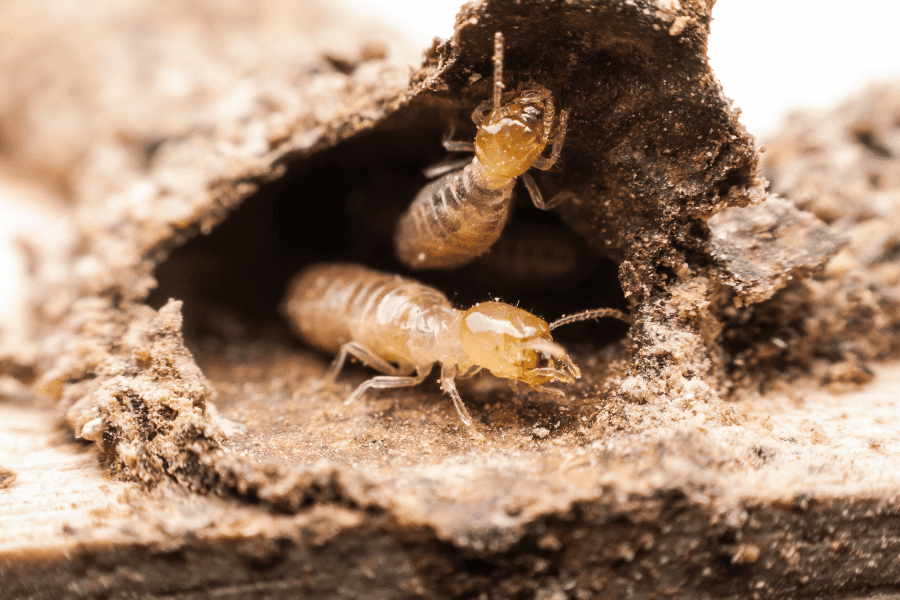
Termites are known as silent destroyers, meaning they can go undetected for a long period of time, making their destruction devasting. Common termite species, such as subterranean termites, will infest our Augusta homes and damage the infrastructure, costing billions of dollars in repair. It can be difficult to detect subterranean termites, often hiding until the damage is done, but it is possible. To prevent termites, every homeowner should recognize signs of termite infestations. Check out our top 5 signs of termites that you might see in your home:
Often found on exterior surfaces, subterranean termites create mud tubes that allow them to move back and forth between their nest and their food source, which is often your home. These tunnels help protect termites from any predators and provide moisture for survival. Usually, mud tubes can be found wrapped around walls, ceilings, and floors. Mud tubes are common signs of termites.
Sometimes, hearing noises is your first sign of a termite infestation. Often, if a termite colony has infested your home, you can hear a faint clicking or knocking sound coming from behind walls and other voids. Termites create this noise when a soldier termite bangs their head against wood or vibrates their bodies to signal damage to their colony. When you listen closely, you can also hear termites chewing through wood.
Have you noticed hollow wood inside your home or in trees throughout your yard? If so, this is a major sign that termites have established a colony on your property. These pests destroy wood from the inside out, leaving only a thin layer of wood behind. When checking for hollow wood, try tapping on the area in question. You’ll hear a hollow or paper sound, indicating an infestation. Other signs include blistering or bubbling paint in or near wood structures, including windows and door trims.
Frass is the name for the waste termites leave behind. When subterranean termites travel through wood, they will push debris and waste out behind them through tiny openings. You may notice small black marks or a dark powdery substance around the infested area with small piles of sawdust-like droppings. These sawdust droppings are frass and are usually the color of the structural wood infested.
The most obvious sign of a termite infestation is seeing the damaged wood itself. Floor, window, and door damage is a major indication that termites are inside. Another indication includes windows and doors not opening or closing smoothly. Take note of any floors that buckle or sag and have them inspected.
If you’ve noticed any of these termite signs or damage, consider contacting your pest control company for a thorough inspection and treatment plan before any more termite damage is done.
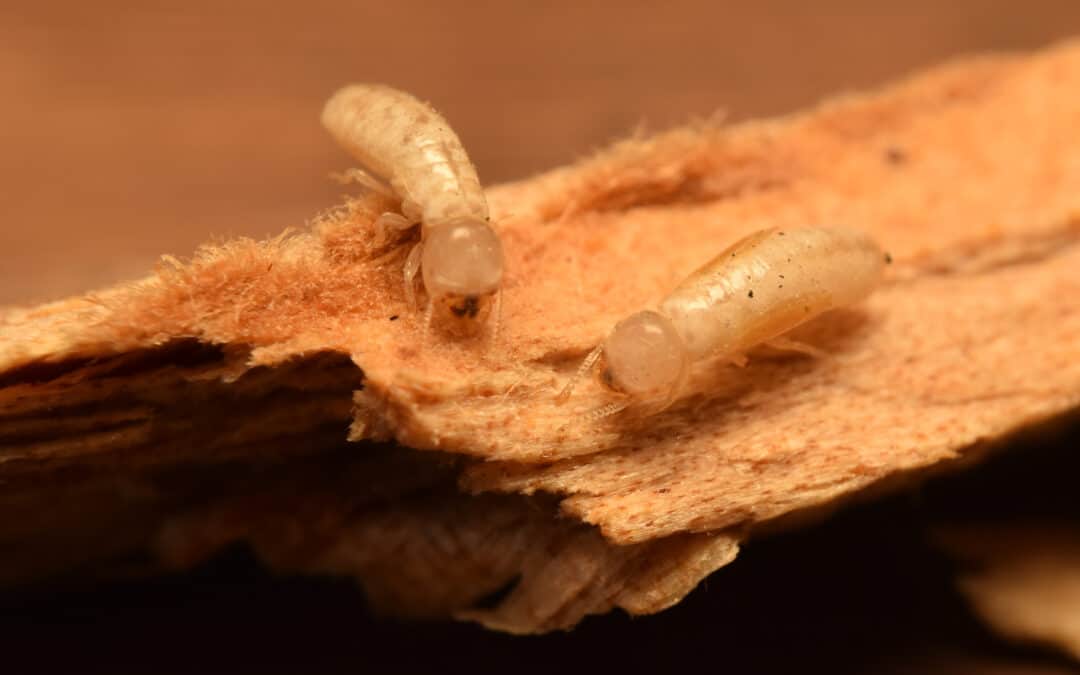
Being ready for termites is your first step in preventing them. Termites can go undetected for long periods, creating extreme damage to the structural integrity of your home. In Tennessee, the most common termite species you’ll find include subterranean termites and drywood termites. The type of termite treatment option you need for a termite infestation will depend on your situation, its location, and the type of termite you have. Check out the most common termite treatments in your area below!
Performed in new construction homes, this treatment is utilized during the building phase of a home. Pretreatments are a combination of liquid termiticide, termite bait, lumber treatment, and in-soil barriers. These treatments are known to be effective and affordable when performed before the physical infrastructure or addition is laid.
Bait stations are placed in the ground and around your home to protect against termites. These stations contain wood, paper, or cellulose that has termiticide. Once termites reach the bait station, they eat the slow-acting termiticide, which allows termites to bring it to their colony and spread it, killing off the entire colony. This treatment is best used in locations where surface treatments will not work, including near foundation drains and areas covered by slabs or flooring.
This long-term treatment gets its name from the literal barrier in the ground between the termites and your home. A barrier treatment is performed by digging a trench around the perimeter of your home and then treated with termiticide. The trench is then refilled with the treated soil to help deter termites away from your home. Sometimes, a physical wall can be built inside the outer wall of the trench, made up of rock, sand, mesh, and plastic. The wall can add another layer of protection between your home and termites.
One of the most common termite treatments is liquid treatment. This option is effective when termites are in the interior of your home. The first step in the treatment is performed by drilling holes in the foundation and wood. Then, the termiticide is injected into the holes that will force termites to emerge. After emerging, the termites will be eliminated by spot treatments with termiticides.
The last thing you want to deal with is a termite infestation, as they can be difficult to get rid of once they’re inside. Consider reaching out to your local termite and pest control company for a termite inspection. These professionals will recommend the best prevention plan to avoid termites in the future. Likewise, if you suspect you have a termite infestation, they will identify the type of termite you have and provide the best termite control option for your situation.
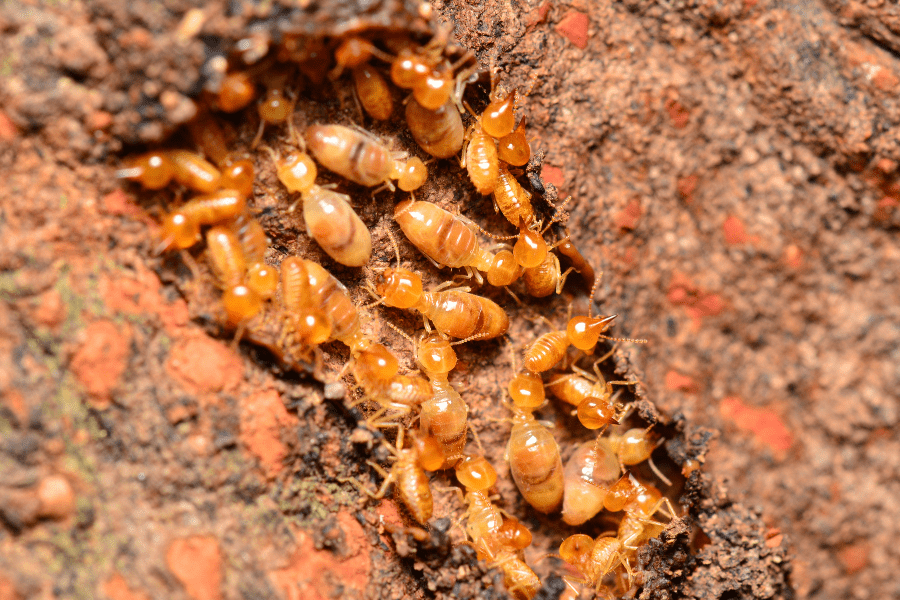
Spring is a crucial time for identifying and dealing with termites because it’s the season for swarming. Swarming termites are a big indicator that a termite colony is nearby, which could mean an infestation is occurring. It’s better to discover you have termites earlier than later, due to the significant damage they can cause to your home.
Swarming termites are winged adult termites that mature and fly away from their colonies to continue reproducing. Termite swarming begins at different times of the year depending on the type of termite, but they all usually begin when the weather begins warming up following a significant rain event. The one type of termite that typically swarms first is known as subterranean termites.
Because termites eat wood from the inside out, termite damage often goes undetected for long periods of time. Often in fact, by the time signs of termites appear, colonies are well established, and significant damage has already been done. If you begin spotting swarming termites, keep an eye out for other signs of termites, like these below:
If you suspect you have a termite problem or if you spot signs of a termite infestation, contact a professional termite control company who can provide you with a thorough termite inspection and a comprehensive termite protection and treatment plan.
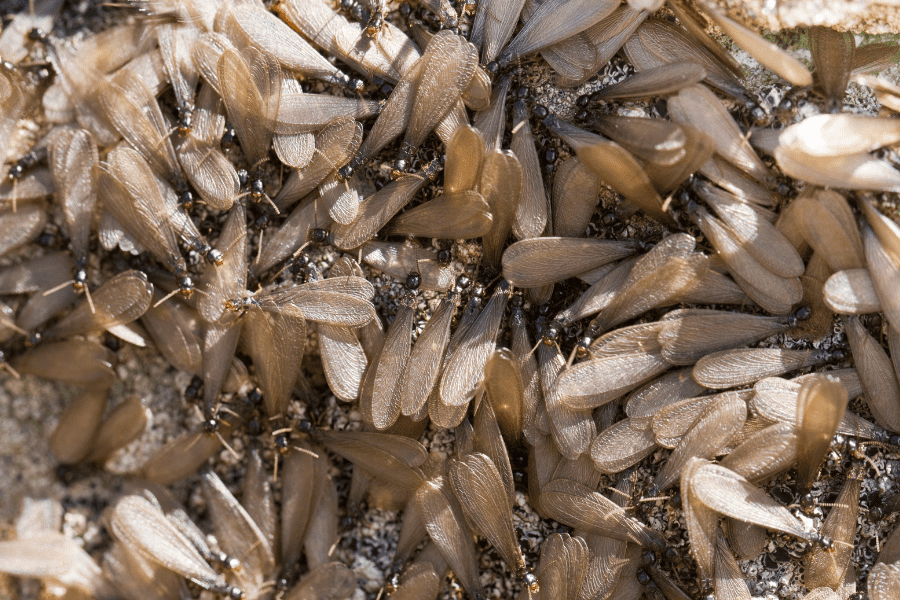
One of the most common signs of termites in your home, including those in Augusta, is seeing a swarm of flying insects. With swarming season around the corner, be on the lookout for these groups of flying insects, including swarming termites.
But how do you know if they’re termite swarmers? Unfortunately, swarming termites appear like flying ants, but there are noticeable differences, especially if you can get a closer look.
Here are three ways to tell the difference in termites vs flying ants:
Beyond the physical differences, they also possess behavioral differences. Both insects live in large colonies with designated caste systems, but termites can also be found in decaying trees, stumps, wood debris, lumber, and wooden structures. The only ant species that would live in any type of wood are carpenter ants; other species wouldn’t be found in these areas.
If you believe you have termites causing damage to your home, reach out to your local pest control company who can provide a free inspection and service plan that’s right for you and your property.

Termites are so destructive because they eat wood from the inside out, often going long periods of time before they are discovered. For this reason, annual termite inspections are critical to protecting your home. These inspections help spot signs of termites sooner, allowing termite control to be implemented earlier in the termite infestation.
There are several different options when it comes to termite treatments. Here are four of the most popular:
Liquid-soil termite treatments are applied to the soil around your home to act as a treatment barrier. They last for an average of 5 years. A trench is dug around the perimeter of your home, and liquid termiticide is applied. The trench is then filled in. This method helps to prevent future infestations while also killing any existing termites as they travel between your home and their nests.
Bait station treatments are another option for termite control. Bait stations are strategically placed around your home using this method. Each station contains a slow-acting termiticide that the termites take back to their nests and share with other termites. These treatments may take longer to work on termites. They also necessitate regular monitoring and maintenance to ensure that each station contains bait.
Wood treatments are an additional termite control option. These treatments make use of either surface sprays and treatments or injected sprays and foams. Wood treatments kill existing termites while also penetrating the wood to prevent future problems. These treatments necessitate direct access to infested wood, which can be difficult to obtain in some cases. Sprays are better for new construction treatments because the wood can be treated while the house is being built. Injected foams are better for use on existing structures because they can expand into cracks and crevices that sprays may not be able to reach.
Pre-treated building materials are ideal for new construction. The termiticide can be sprayed or brushed on. Termiticide can also be applied anywhere the new structure comes into contact with the soil, allowing the soil to be pretreated. Using pressure treated wood is another option because termites are less likely to infest wood that has been treated with chemicals.
While these termite treatment options are efficient at eliminating existing infestations, unfortunately they do not provide permanent elimination of termites. There is always a risk that termites will return to invade again. Termite control is an ongoing process, requiring persistent maintenance and prevention techniques to continue to keep them out.
You can prevent termites by:
Contact your local pest control company for a thorough evaluation.
How to Keep Spring Wildlife Out of Your Home
How Dangerous Is The Water Moccasin?
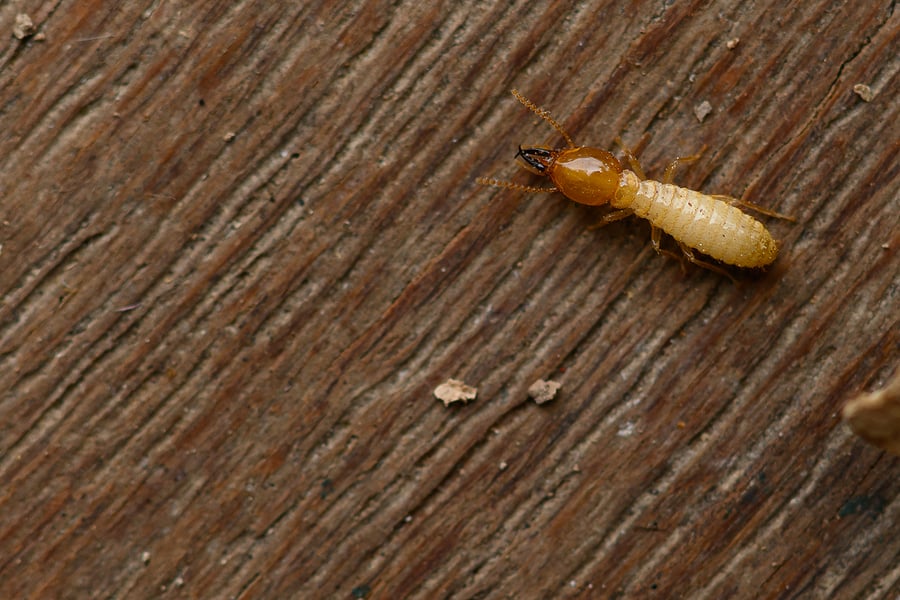
Subterranean and drywood termite types are popular within the Coral Springs area, looking for homes for their next meal! Termites are year-round pests, making it essential for every South Florida homeowner to be on top of termite control. Check out the top 5 ways you can prevent termites from invading your home and causing billions of dollars in repairs!
If you’re keeping wood stacked against your house, you could be leading termites right inside your home! Leaving woodpiles near your home is not only a great source of food for termites, but it also gives them a safe passage into your home. To avoid the risk of a termite infestation, don’t store any type of wood products in your crawlspace and stack your woodpiles at least 20 feet away from your home. For extra precautions, consider placing wood in a sealed plastic container with a lid and elevating it off the ground.
Termites need moisture to survive, and if there’s any improper drainage in or around your home, you create the ideal environment for them to thrive. Inspect your downspouts and divert water away from your home. Regularly check that your faucets and A/C drip lines are not causing water to pool around your foundation.
Did you know wood mulch is a major termite attractant? It’s true that wood mulch can be a great landscaping tool, but it is known to contain moisture that attracts termites. If you’re using mulch, keep it at least four inches away from your foundation. Likewise, make sure it never contacts the home’s siding, window frames, or door frames. Sometimes an overlooked reason for a termite infestation is clogged gutters. Clogged gutters containing debris will collect moisture, attracting termites. It’s important to remove debris and clean your gutters on a regular basis to avoid backup.
Trees hanging over your home and overgrown bushes can create the perfect shelter area for termites. These areas will often cause moisture to build up and provide an area to build their colony. Avoid termites utilizing your landscape by regularly maintaining it and keeping your trees and shrubs trimmed on a regular basis.
While the above can help make your home less attractive to termites, the best and most effective way to avoid termites is to do a home inspection and regular termite treatments. There are several termite treatment options, such as bait stations, liquid-soil treatments, and spray/foam treatments. It’s best to contact your local Coral Springs pest control company to provide you with a thorough termite inspection and recommended termite control plan that works best for your situation.